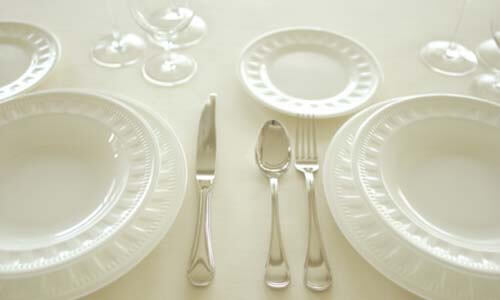Sherry
A fortified wine originally made in and around the town of Jerez in the Andalusia region of southern Spain. It's now also made in the United States and other parts of the world such as Australia and South Africa. As with many wines, sherries range from connoisseur quality to inexpensive mass-produced versions.
The Spanish are the acknowledged experts, using the solera system of topping off older wines with the more recently made sherry. Thus there are no vintage sherries and the quality is consistent year after year.
Sherries range in color, flavor and sweetness. Finos are dry and light, while Manzanillas are very dry, delicate finos with a hint of saltiness. Considered a medium sherry, the nutty-flavored amontillados are sweeter, softer and darker in color than finos. They're sometimes labeled milk sherry . The sweet olorosos are fuller flavored and darker than dry or medium sherries. They are usually aged longer and are also more expensive. Olorosos are often labeled cream or golden sherries.
Sherries can be drunk as an apéritif or after dinner. Dry sherries are usually drunk chilled, sweet sherries at room temperature
Sherry
Say "Sherry," and you immediately think of England. But Sherry-the underrated and misunderstood fortified wine-comes from Spain. It's produced in the Jerex region from three main grape varieties: Palomino for the dry Sherries and Pedro Jimenex and Moscatel for the sweet wines. Making Sherry involves a number of steps and many twists and turns.
Yeast
Once the base wine is made and put into barrels, a yeast called flor forms on the top of the wine. Not all the wines in the barrels are susceptible to the yeast, and the yeast will only grow with proper temperature and humidity. The flor does a couple of things. If influences the flavor adding a tangy character to the wine-and it creates a protective layer like a crust on top of the wine so no further oxidation can occur. How well the flor develops determines the style of the Sherry. When the flor fully forms, the wine will be dry and crisp. These will fino Sherry.
Occasionally-and mysteriously-the flor will begin to form and then stop. This may happen in one out of every hundred barrels. The dry and complex Sherry that results is called Palo Cortado.
Wines that don't form the flor at all are the olorosos, which have a rich, raisin flavor. They develop with full exposure to the air.
fortifying and blending
The next step is to fortify the wines with a clear Brady, which boosts their alcohol content-and then onto one of the most fascinating blending operations in all of winemaking, known as the solera system. Because most Sherries aren't vintage dated, there is the need to make the wines consistent from year to year. To achieve this, wines from many years-and sometimes wines from as far back as a hundred years-are blended together.
Imagine rows and rows of casks all stacked on top of each other-up to fourteen tiers. The oldest wines are on the bottom and the youngest on top. Producers remove about a quarter to a third of the wine from the bottom barrels and bottle it. They replace what they just removed with a wine from the next oldest, one tier up. This cascading of Sherry from the younger to the older continues all the way to the top. By blending all these wines together, you get a product that's consistent and homogenous.
Sherries start out as either a fino or an oloroso (with the very few exceptions of the Palo Corrado). Then it gets complicated aging will change the character of a Sherry so it no longer fits into its initial category. And sometimes the Sherries are sweetened, producing still different styles.
Among the sweet Sherries are:
Paul-Cream-a lightly sweetened fino
Cream Sherry-a heavily sweetened oloroso
Brown Sherry-an extremely sweet and dark oloroso
Madeira
Madeira is just about indestructible. While almost all other wines can't take heat and motion and won't last more than a couple of days once the bottles are opened, Madeira can survive all those things. In fact, Madeira thrives on heat. That's how it's made.
Madeira is a Portuguese island off the coast of North Africa. It was perfectly situated in the Atlantic to become a thriving port for ships traveling to South America and around Africa to Asia. Ships loaded wine onboard for the long journeys. The only problem was that the wines were undrinkable by the time the ships arrived at their destinations. So alcohol, distilled from cane sugar, was added to stabilize the wines.
After enough trips, it was discovered that the wines tasted better after the voyages than before. And, further, that Madeira that had made a round trip was better than Madeira that had traveled only one way.
Shippers began putting wine in the holds of ships for the sole purpose of developing their flavors. It eventually got too expensive-so winemakers had to come up with other ways to simulate the journeys. Subjecting the wine to heat did the trick.
Madeira usually starts out as a white wine. After fermentation it spends at least three months in heated tanks or rooms -or exposed. to the sun. As the wine bakes, sugars become caramelized to an amber color, and the wine is oxidized. The term is maderized.
The different styles of Madeira are named after the grapes they're made from:
Sercial -the driest style, tangy with high acidity
Verhelho -medium-dry with nutty flavor
Bual (or Boal) -rich, medium-sweet with raisin flavor
Malvasia (or Malmsy) -sweet and concentrated
Sercial and Verdelho are appropriate as aperitifs. The sweeter two are dessert wines. When grape names don't appear on the label, the style will be indicated in a more straightforward fashion: dry, medium-dry, medium-sweet, and sweet.



